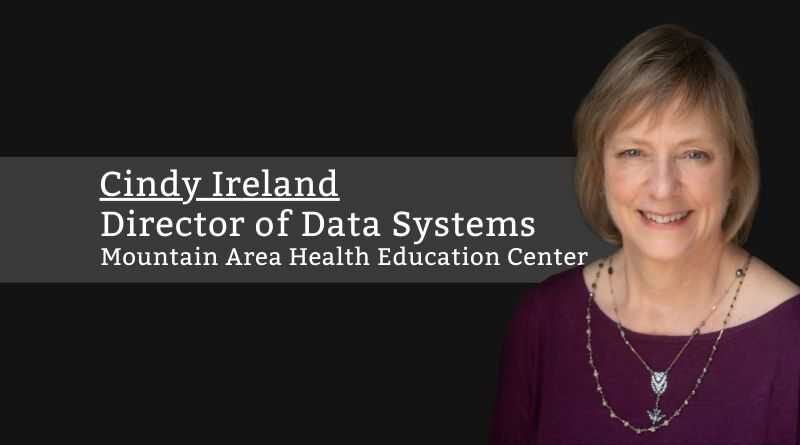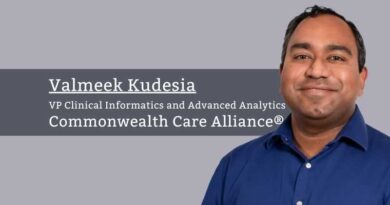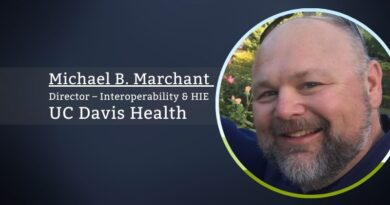Technology Change Management – It’s the People
By Cindy Ireland, Director of Data Systems, Mountain Area Health Education Center
Mountain Area Health Education Center (MAHEC) is part of the North Carolina AHEC system. Over the last 4+ years, it has tripled in size, making it the largest non-profit in Western North Carolina. Growth comes in the services provided in family medicine, internal medicine, obstetrics and gynecology, psychiatry, behavioral health, and dental services and also in the education sector, where students and residents come to advance their education. The employee population grew from about 300 to over 900 today. The challenges and opportunities of this growth, plus ensuring technology, process and needed support can scale, are exciting opportunities we face every day, and they are not always easy.
MAHEC’s mission is to train and retain healthcare professionals while ensuring patients in our 16 county region of Western North Carolina have access to quality care. These are very rural regions where access is limited and connecting, whether in person or via telehealth, requires creative solutions. In order to meet patient needs, we have hired new faculty and staff, opened new offices and clinics, implemented telehealth options, and developed new ideas for the best patient experience. Keeping new and existing staff current on how to best use new technology requires leadership and staff adoption. As a learning institution, some team members are just getting started in their healthcare career and much of what we do is very new to them.
We are piloting several initiatives right now in which we will use data to evaluate the effectiveness of change. I am very optimistic that we will move forward with some of the changes, or we won’t.
I’m not a physician. I have been in technology my entire career. I am stretched more than expected to consider the point of view of the physician and staff providing care, but even more important is the impact of technology and change on our patients.
These challenges are not unique to MAHEC or many other healthcare organizations. Leading through change is both exhilarating and exhausting. Technology is part of the solution but not the entire answer. I spend a great deal of time thinking about the human side of technology – the change management side. With new providers on staff that have worked with different electronic health records, existing staff who remember when things used to be simpler – a time they long to return to – and a technology team that continually needs to upgrade and learn new skills, we are asked to do more, differently every day. Yet, our success is dependent on people.
Our technology needs include everything from continuous security management to improving the patient telehealth solution when many of the patients in our region have limited access to reasonable bandwidth. Our organization is also moving from an environment where individual clinics have autonomy in workflow and processes to a more holistic view of how we provide the best patient experiences consistently across the region. Consistency across the organization is as much about using technology as it is about realizing we need to change. Complexity to succeed involves engaging everyone from our CEO to our administrative staff.
Communication is the focal point for success when dealing with large transformational projects. The ability to listen to needs, acknowledge concerns, share positives, and find the balance for as much of the staff as possible means spending a lot of time with people. I’ve been in technology for over 20 years and have led a couple of very large transformational projects. I’ve learned the hard way, through a couple of failures, that how we lead the people through change makes or breaks a successful technology project, whether it is updating computers, changing an EHR (huge), adopting new financial or human resource systems, rolling out an organization chat software or any project large or small.
Finding the balance to bring as many people along as possible in any transition is key. Thinking about the standard bell curve, approximately 10% will follow change because they are excited by it. 10% may never accept the change, no matter how hard you try. The best strategy that I learned from some former colleagues was to focus on the 80% that could go either way. With the right inclusion and strategy, they will come with you. Many people work too hard to convince the negative 10% because we want them to engage, it leaves others feeling left out.
With so many stakeholders, how do we look at all these opportunities, make the best decisions, and always strive to improve patient care? Data really helps! That is not new, but depending on the culture, it may not be the norm. In our rapid growth environment, moving fast also means using our previous experiences, our track record of success, and our desire to be innovative to inform our decisions. As we have grown, larger the impact and scale of our decisions is greater and finding some balance that includes data is more important than ever. Whether assessing the call volume and answer rates for our scheduling team for the best service outcomes, looking at standards of care across our patient population with an equity lens, monitoring performance measures in all clinics, or building solutions that can make the work easier and care better, we engage data as a component to drive change.
Data supports the strategy and decisions. It also balances some of the emotions or feelings in the process because institutional learning and knowledge are highly valued. We are piloting several initiatives right now in which we will use data to evaluate the effectiveness of change. I am very optimistic that we will move forward with some of the changes, or we won’t. Based on what we learn, how we quantify the value, and by listening to our pilot group, we will know what worked and what didn’t. I’m excited about this work, it is based on technology, but the people will determine the success..



